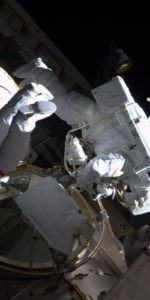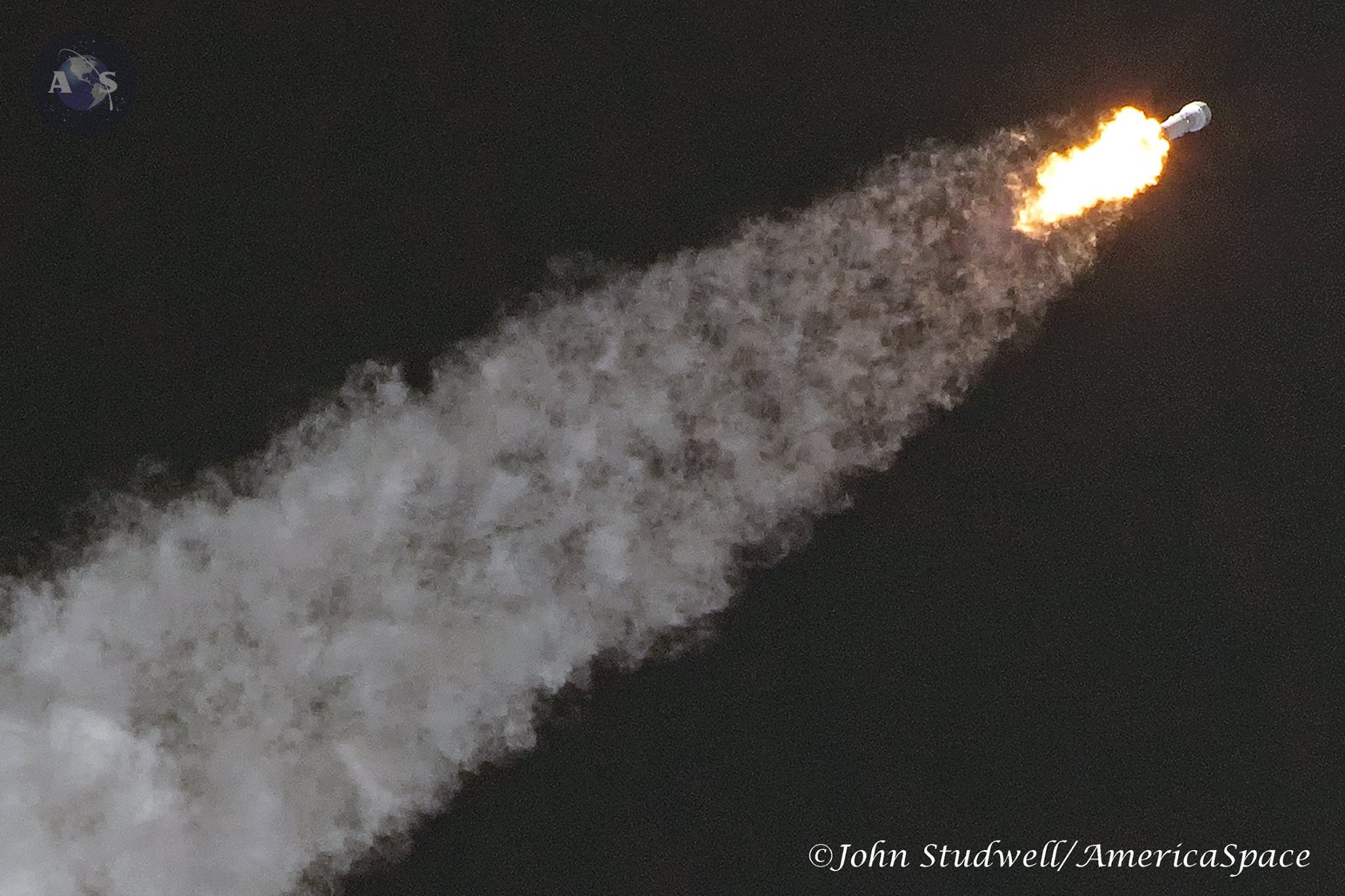
History was made this evening (Thursday, 30 March), when SpaceX successfully launched the first “re-used” rocket stage on a second mission to deliver a payload towards orbit. Following a 24-hour delay, caused by the domino-like effect of an earlier delay to its pre-flight Static Fire Test, the Upgraded Falcon 9 departed Pad 39A at the Kennedy Space Center (KSC) in Florida at 6:27 p.m. EDT. The launch occurred a little over an hour ahead of local sunset and set the scene for a spectacular sequence of events.
Eight minutes after leaving the Cape, the Upgraded Falcon 9’s first stage burned back through the atmosphere and alighted smoothly on the deck of the Autonomous Spaceport Drone Ship (ASDS) in the Atlantic Ocean. And a little over a half-hour into the flight, the mission’s primary payload—the SES-10 communications satellite, flying on behalf of Luxembourg-based SES—was delivered perfectly into orbit.
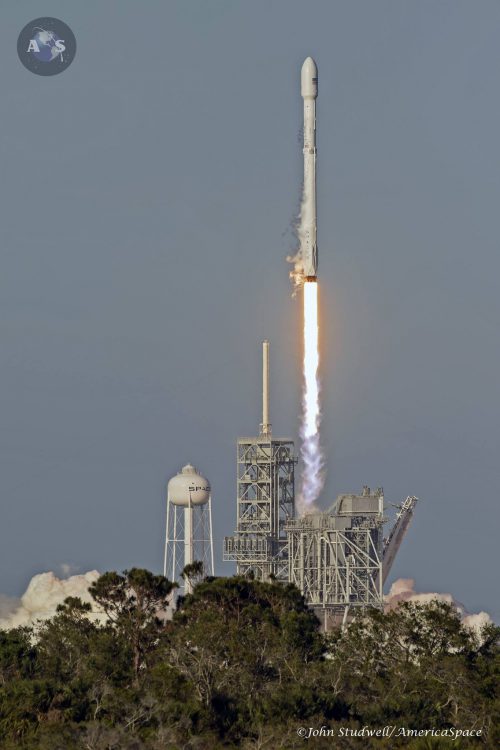
As outlined previously by AmericaSpace, this represents the third SES bird to be delivered to Geostationary Transfer Orbit (GTO) and eventually Geostationary Earth Orbit (GEO) by SpaceX. In December 2013, the Hawthorne, Calif.-based company boosted SES-8 to orbit, followed by the launch of SES-9 in March 2016. At least three more satellites—SES-11, SES-14 and SES-16—are also slated to ride Upgraded Falcon 9 rockets during the course of the coming year. SES-8 was SpaceX’s first-ever foray to geostationary altitude, and with today’s historic maiden reflight of a “flown” first stage, the significance was not lost on SES Chief Technology Officer Martin Halliwell. “In 2013, we were here for SES-8, 1st GEO mission for @SpaceX,” said Mr. Halliwell, in an SES tweet. “Today, we’re here to be 1st-ever mission on pre-flown booster.”
Preparations for today’s flight got underway in April 2016, when the Upgraded Falcon 9’s first stage roared back through the atmosphere—having earlier boosted the CRS-8 Dragon en-route to the International Space Station (ISS)—and alighted perfectly onto the Autonomous Spaceport Drone Ship (ASDS) in the Atlantic Ocean, about 420 miles (680 km) off the Cape Canaveral coastline. From the outset, it was hoped that the returned CRS-8 first stage would be refurbished to become the first “re-flown” booster. Last August, it was revealed that SES-10 would be the customer and in January 2017 the refurbished stage underwent a static test-firing of its nine Merlin 1D+ engines at SpaceX’s Rocket Development Facility in McGregor, Texas. It was later delivered to KSC for pre-flight processing. In parallel, the 11,700-pound (5,300 kg) SES-10 satellite was delivered from prime contractor Airbus Defence & Space’s facility in Toulouse, France, to Florida, in mid-January and entered its final weeks of preparations for launch.
Since today’s mission was heading for geostationary altitude, about 22,300 miles (35,800 km) above the planet, significantly higher energy and velocity demands were brought to bear on the Upgraded Falcon 9, when compared to journeys into low-Earth orbit. As a result, the possibility of bringing the first stage back to solid ground at Landing Zone (LZ)-1 at Cape Canaveral Air Force Station was not possible on this flight. Instead, the “East Coast” ASDS—nicknamed “Of Course I Still Love You”—was drawn out of Port of Jacksonville on Saturday afternoon, by means of the Elsbeth III tug, bound for a position about 420 miles (680 km) offshore. It would represent the first ASDS landing for a Florida-launched mission since last August’s JCSAT-16 mission.
Launch was originally targeted for Wednesday, 29 March, but a delay in the Static Fire Test of the Merlin 1D+ first-stage engines prompted a 24-hour slip to Thursday, 30 March. As has become customary since last September’s on-the-pad loss of an Upgraded Falcon 9, the customer’s payload is not installed atop the booster until after the Static Fire Test. At length, the test occurred without incident on Monday, 27 March and prompted a characteristically clipped “Static fire test complete” update from SpaceX. A revised launch window for the 30th was reported to extend from 6 p.m. EDT through 8:30 p.m. EDT, although SES tweeted early Thursday that the opening of the window had been shifted slightly to 6:27 p.m. EDT.
In the small hours of Thursday morning, the 230-foot-tall (70-meter) Upgraded Falcon 9—this time capped with SES-10, inside its bulbous payload fairing—was elevated from a horizontal to vertical configuration at Pad 39A. The historic site, which saw more than four decades of service during the Apollo and Space Shuttle programs, was primed and ready for its 97th launch. Significantly, today’s flight of SES-10 also marked the third launch out of 39A in a record-setting 39 days, as well as its second mission in just 14 days. This also secured an empirical record for the shortest interval between a pair of flights from 39A, easily eclipsing the 17 days which elapsed between the launches of shuttles Discovery and Challenger in April 1985.
With an estimated 13 hours required after elevation to the vertical to properly check out the payload before launch, the clock was ticking and it was clear that the SpaceX team would go to the wire to fly on Thursday evening. However, the weather outlook remained on-side for Thursday, but not for the backup attempt on Friday. According to the 45th Space Wing at Patrick Air Force Base in its L-1 weather briefing, there was expected to be an 80-percent probability of acceptable conditions at T-0 on Thursday, deteriorating to just 40-percent favorable on Friday. This led to a consensus to move the “delay” day to Saturday, when conditions were predicted to be 80-percent-favorable.
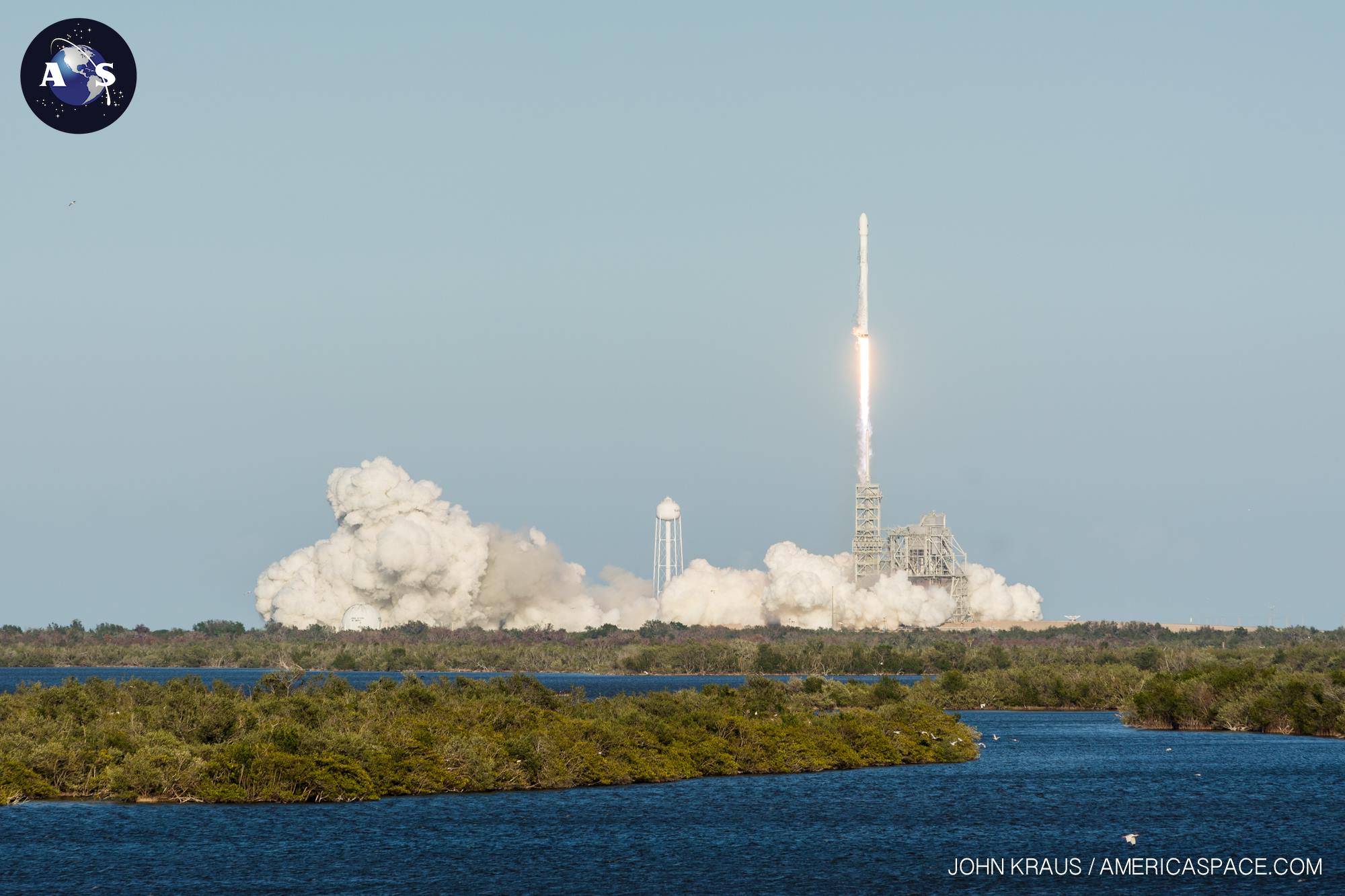
“While skies remain clear over Central Florida, a strong storm system is developing over Texas,” the 45th noted on Wednesday morning. “Thursday will see the Texas storm system strengthen and begin to track northeasterly into the Tennessee Valley. Although the system and its associated frontal boundary will not directly impact the Space Coast until Friday, upper-level cloudiness and added instability ahead of the system will be approaching the Spaceport.” This posed a risk of violating the Cumulus Cloud Rule and Thick Cloud Rule on Thursday, but was expected to be joined by a chance of Liftoff Winds scuppering a launch attempt on Friday. As the storm system pushes into the Florida Pandhandle, it is anticipated that surface winds along the Space Coast will turn more southerly and gusts will increase on Friday, presenting a risk of showers and isolated thunderstorms.
As a result, SpaceX pressed ahead with efforts to get SES-10 airborne on Thursday. In keeping with procedures implemented after last September’s failure, the Upgraded Falcon 9 benefited from a longer fueling regime. About 80 minutes before T-0, the Launch Conductor polled his team for a “Go/No-Go” decision, after which the loading of rocket-grade kerosene (known as “RP-1”) and liquid oxygen got underway. This is quite different from previous practice with the booster, which saw fueling commence about 35 minutes before T-0. The longer fueling regime—first trialed on January’s inaugural Iridium NEXT mission—is expected to be a temporary measure, until a further enhanced Falcon 9 upgrade enters service, later in 2017.
Passing T-10 minutes, the terminal countdown autosequencer was initiated and the nine Merlin 1D+ engines of the first stage—configured in a circle of eight, with the ninth at the center—were chilled down, ahead of ignition. The vehicle transitioned to internal power and assumed primary command of all critical functions, going into “Startup” a minute before launch. At T-3 seconds, the nine Merlins roared to life, pumping out a combined thrust of 1.5 million pounds (680,000 kg). Liftoff occurred on-time at 6:27 p.m. EDT, about an hour ahead of local sunset, and the booster powered smoothly uphill for the first 2.5 minutes of the flight. The nine Merlins shut down on time and the first stage was jettisoned, to begin the second attempt in its career to return home and land on the ASDS.
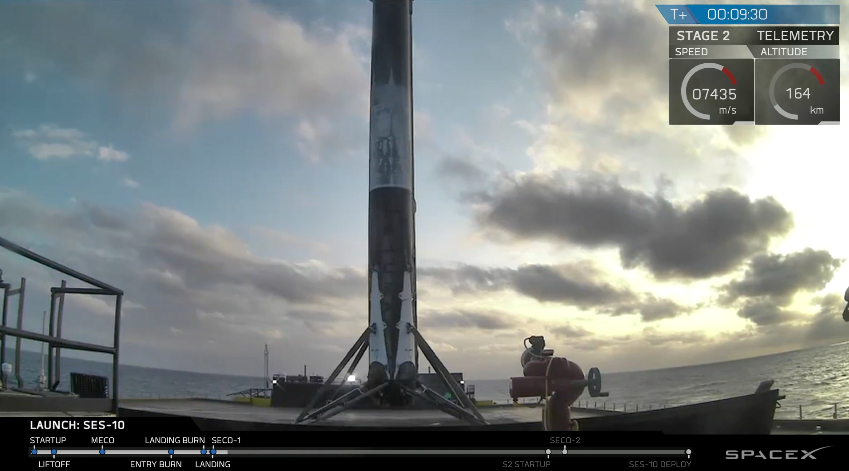
Interestingly, the stage’s previous ASDS landing, back in April 2016, was actually the very first successful landing of a Falcon 9 on the drone ship. Separating from the second stage at T+2 minutes and 41 seconds, the first stage established itself onto the proper orientation for its “Entry Burn”, which got underway a little over six minutes since leaving KSC. And at 6:35 p.m., a mere 8.5 minutes after leaving Earth for the second time, the first “re-used” booster alighted with precision on the ASDS. To quote a tweet from SES’ Mr. Halliwell, speaking before the flight: “We’re at the edge of quite significant bit of history here. This is big step for SES, for @SpaceX and for the industry.”
Yet, as properly highlighted by SpaceX, the return of the first stage was a secondary objective for the mission. Tonight’s primary focus was the injection of SES-10 into GTO, where it will spent upwards of 15 years providing communications services across Mexico, Central and South America and the Caribbean region. The satellite will help to meet growing demands for enhanced picture quality—with 80 Ultra-High Definition (UHD) channels anticipated for Latin America by 2025—as well as supporting business enterprise, providing better broadband connectivity and offering improved in-flight aircraft connectivity and coverage for the Caribbean cruise tourism industry.
Following the departure of the first stage, the second stage burned its Merlin 1D+ Vacuum engine for almost six minutes, during which time the payload fairing was jettisoned. This exposed the SES-10 payload to the space environment for the first time. Following Second Stage Engine Cutoff (SECO-1) at eight minutes and 34 minutes into the mission, the stack coasted for more than a quarter-hour. The Merlin 1D+ Vacuum then ignited a second time, for SECO-2, burning for a little under a minute, to pre-position SES-10 for deployment. The satellite finally departed the second stage at 6:59 p.m. EDT, some 32 minutes after leaving Florida, wrapping up SpaceX’s fourth mission in the first three months of 2017.
Be sure to “LIKE” AmericaSpace on Facebook and follow us on Instagram & Twitter!
.
Missions » Commercial Space » SES »



